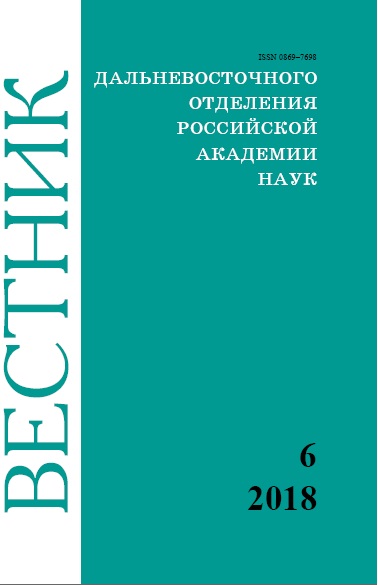Environmental and anthropogenic factors of the chemical elements accumulation in the bottom sediments of the Amur Bay (the Japan Sea) at the change in the runoff regime of the Razdolnaya River.
Keywords:
subcolloidal fraction, clay minerals, increased river runoff, sorptionAbstract
The contents of some elements (Si, Fe, Mn, Na, Ca, K, P, V, Cr, Co, Ni, Pb, Cu, Zn, Cd, As, Sn, Mo, Li, Rb, Cs, Sc, Ga, Y, Hf, Ta, Nb, Th, U), Corg and clay minerals (HS, CL, SM) in the subcolloidal fraction of the Amur Bay sediments, being selected both with the mean long-term river runoff (2014) and its increase (typhoon 2015), have been determined. The suspension enters the bay with a large number of HS from the river (after the typhoon) and with SM from the Uglovoye Bay (the mean annual runoff). The increase in element contents in the bay sediments (being subjected to the influence of the river and the central part of the bay) is shown as a result of ongoing environmental processes (the sorption on Fe, Mn oxyhydroxides and the lifetime accumulation by marine phytoplankton and zooplankton) and anthropogenic factors (the escape from the Golden Horn Bay).


